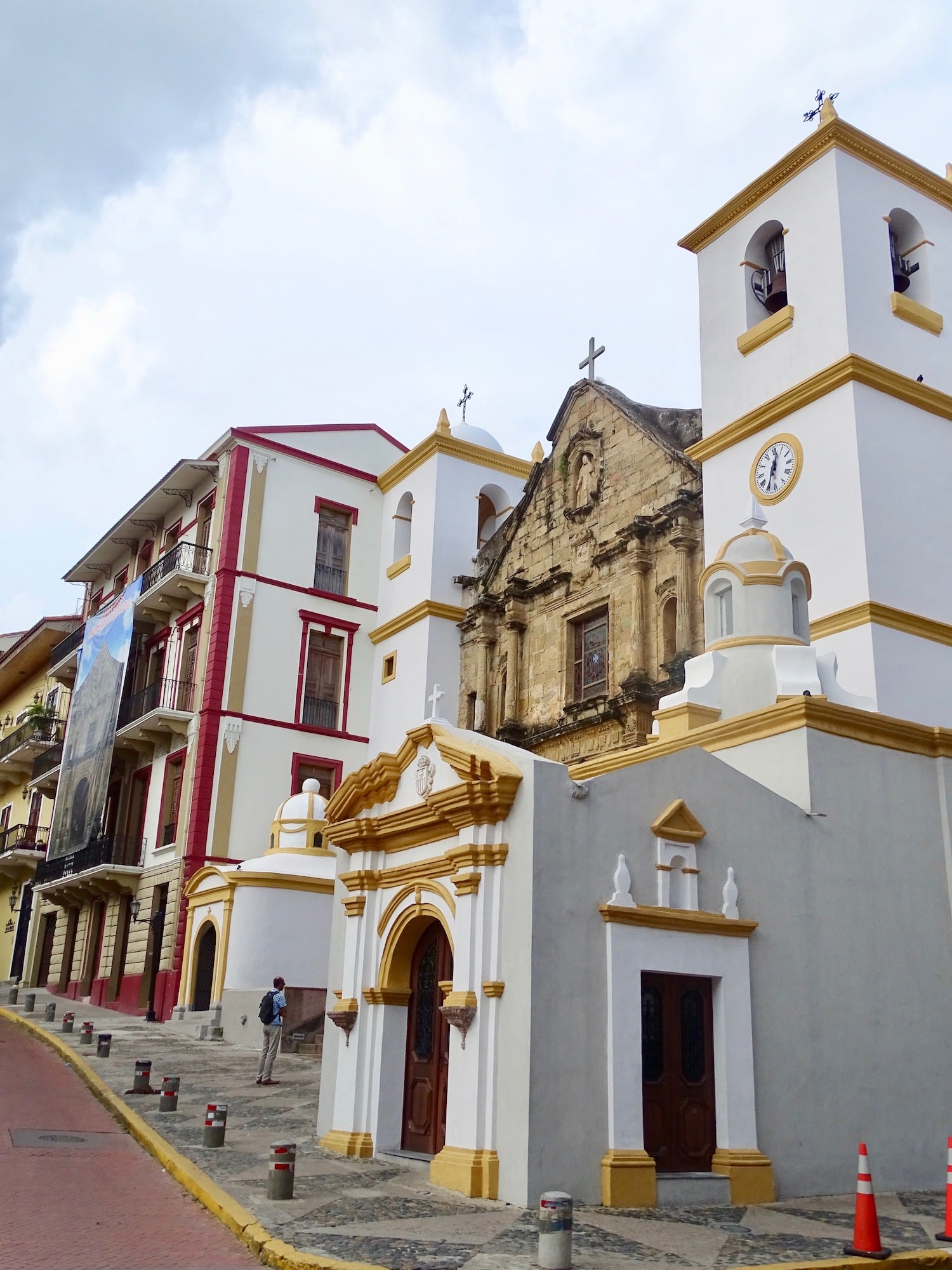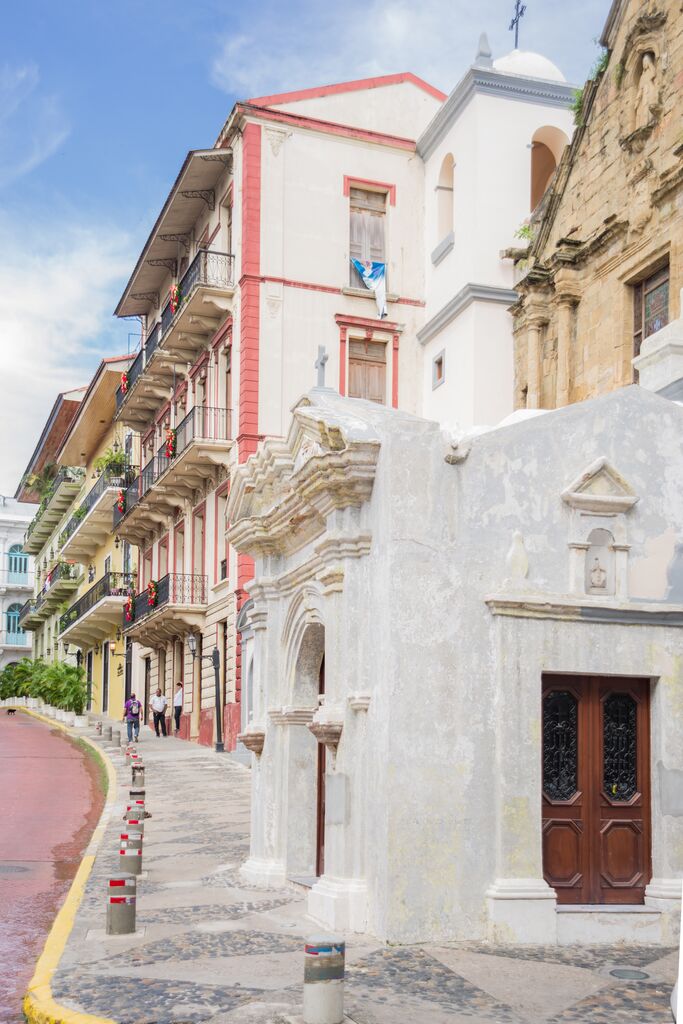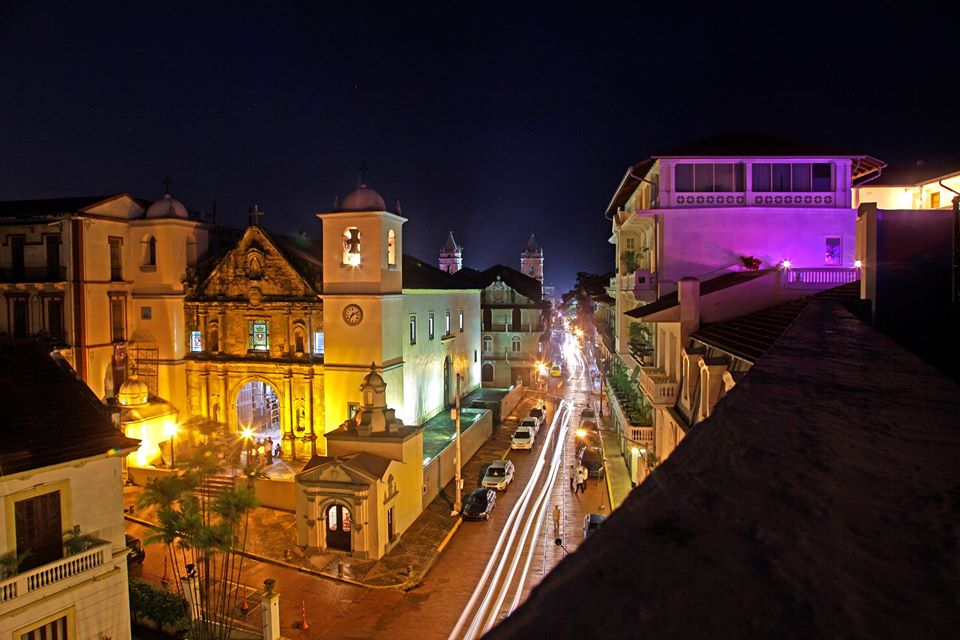Many cities in Latin America have an Our Lady of Mercy Church. This is one of the churches in Casco Viejo, commonly known as “Iglesia de la Merced”. They are found in Bolivia, Spain, Argentina, Cuba and Peru. The Virgin of Mercy appeared to three illustrious figures in Aragon asking them for a religious order dedicated to the redemption of the captives. The three met at the Barcelona Cathedral in 1218 to share their appearance. The feast of the Virgin is celebrated on September 24.
The Order of Mercy in Panama dates from 1522 according to the accounts of Christopher Columbus’ travels. This convent served as a resting place for missionaries from Spain. In 1671, the pirate Henry Morgan attacked the city that is currently known as Panama La Vieja. This church was the only one that was not burned during the looting, since it was used as a barracks. It was decided to move the city to a peninsula at the foot of Ancon Hill, as it would be a safer location. However, the Mercedarians were the last to leave.

Construction of the new church
Mercedarians were granted land in 1673 to build the new Our Lady of Mercy Church and a convent. This land was located in front of the Earth Door where you entered Casco Viejo, which was a walled city. In 1675 rumors of a new attack emerge. Therefore, the materials that were to be used for the structures were ceded to build the wall. They had to use the old material that was brought by sea, stone by stone, from Panama La Vieja.
The first thing that was built was a right side chapel, where the mass was given to inaugurate the new Panama City on January 21, 1673. Finally, in 1680 they moved completely to Casco Viejo. The construction of the church began in 1688 and ended in 1796.
Our Lady of Mercy Church in Casco Viejo has three naves and two chapels, one is a mausoleum. The interior is modest, with a ceiling supported by huge columns on pedestals. The structure of the walls were made of lime and stone, except for the main facade that has the old stones. Therefore, it is known as “the church of the two cities.”

History of the Church of Our Lady of Mercy
In 1821, Panama voluntarily joined the Great Colombia. Colombian President, Tomás Cipriano Mosquera, passed a law to expropriate religious orders causing most to leave the country. Fortunately, the Our Lady of Mercy Church was able to maintain itself, unlike others such as the Compañía de Jesús Church and Convent that were left in ruins. The Mercedarians were expelled in 1861 and in 1875 the church was transferred to the Metropolitan Cathedral of Panama to be used as a tabernacle. In 1980 the Mercedarians returned to Panama, retaking their temple three years later.
On November 26, 1956, the Church of Our Lady of Mercy was declared a national historical monument. This temple was able to survive all fires, until 1963 when it lost original architectural values such as the choir and the main altar.
Restoration of Our Lady of Mercy Church
The Tourism Authority of Panama contributed funds for the restoration of the church since it is considered a tourist attraction. With the funds plans were made, walls were restored, and carpentry work. Besides, the lighting system and lightning rod were fixed.
During the restoration, Manuel Quintana was hired who comes from an old family of bell foundries in Spain. He mainly focuses on restoring and preserving bells as they are quite durable. Manuel was surprised on his visit to Panama, since the bells were older than the arrival of the Mercedarian order in Panama. The bells of Our Lady of Mercy Church date from the thirteenth century. They carry the names: Our Lady of Mercy, Saint Serapion, Saint Peter Nolasco and Saint Raymond Nonnatus. The old bells of this church and the Saint Francis of Assisi church are on display in its museum.
In October 2015, four new stained glass windows were installed that were made in Spain. They show the coats of arms of the city, the republic, the Mercedarians and a flower of the Holy Spirit. Air conditioning was also installed to preserve the cultural, religious and historical heritage.
Visit Our Lady of Mercy Church
Our Lady of Mercy Church is located on Central Avenue with 9th and 10th streets, diagonal to the American Trade Hotel. Its hours are from 7 a.m. to 7 p.m. This is a fully operational church that celebrates masses every day at 7:00 a.m. and 5:00 p.m. On Sundays and religious holidays it has a mass at 7 a.m., 8 a.m., 11 a.m. and 5 p.m.

Inside there is a museum with religious and historical documents from Panama. It has two levels and a well, more than 200 years old, in the inner courtyard. It contains the birth and baptism certificate of Tomas Herrera, the marriage certificate of Manuel Amador Guerrero and his wife Maria Ossa de Amador and the marriage certificate of the poet Ricardo Miro and his wife Isabel Grimaldo.
The museum has documents of the creation of the republic and independence. One of the most important acts is the record of the battle of the Calidonia bridge of 1900 written by Camilo Quelquejeu. In addition, they have a copy of Panama’s first constitution, from 1904, which was printed in 1929. Other historical documents are a map of the world from 1587.
In the Museo de la Iglesia de la Merced there is a birth, as in the Church of San Jose, and a store of religious objects. There is no cost to enter the museum and it is open every day from 9 a.m. at 7 p.m.
[…] to side of a block. On one side it is on Avenida Central, between Calle 9 and 10, right in front of La Merced Church and Rey Supermarket and on the other side it is on Plaza […]